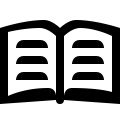عنوان
پدید آورنده
موضوع
رده
T385 .J355 2014
T385
.
J355
2014
کتابخانه
محل استقرار
INTERNATIONAL STANDARD BOOK NUMBER
(Number (ISBN
1118712196 (paperback)
(Number (ISBN
9781118712191 (paperback)
NATIONAL BIBLIOGRAPHY NUMBER
Number
dltt
TITLE AND STATEMENT OF RESPONSIBILITY
Title Proper
Mathematical structures for computer graphics /
General Material Designation
[Book]
First Statement of Responsibility
Steven J. Janke
PHYSICAL DESCRIPTION
Specific Material Designation and Extent of Item
xv, 392 pages :
Other Physical Details
illustrations :
Dimensions
23 cm
GENERAL NOTES
Text of Note
Machine generated contents note: Preface iii 1 Basics 1 1.1 Graphics Pipeline 2 1.2 Mathematical Descriptions 5 1.3 Position 6 1.4 Distance 9 1.5 Complements and Details 13 1.6 Exercises 17 2 Vector Algebra 21 2.1 Basic Vector Characteristics 22 2.2 Two Important Products 31 2.3 Complements and Details 42 2.4 Exercises 46 3 Vector Geometry 49 3.1 Lines & Planes 49 3.2 Distances 55 3.3 Angles 63 3.4 Intersections 65 3.5 Additional Key Applications 73 3.6 Homogeneous Coordinates 86 3.7 Complements and Details 90 3.8 Exercises 94 4 Transformations 99 4.1 Types of Transformations 100 4.2 Linear Transformations 101 4.3 Three dimensions 113 4.4 Affine Transformations 123 4.5 Complements and Details 134 4.6 Exercises 145 5 Orientation 149 5.1 Cartesian Coordinate Systems 151 5.2 Cameras 159 5.3 Other Coordinate Systems 182 5.4 Complements and Details 190 5.5 Exercises 193 6 Polygons & Polyhedra 197 6.1 Triangles 197 6.2 Polygons 213 6.3 Polyhedra 230 6.4 Complements and Details 245 6.5 Exercises 250 7 Curves & Surfaces 255 7.1 Curve Descriptions 256 7.2 Bezier Curves 268 7.3 B-Splines 278 7.4 NURBS 295 7.5 Surfaces 300 7.6 Complements and Details 311 7.7 Exercises 316 8 Visibility 321 8.1 Viewing 321 8.2 Perspective Transformation 323 8.3 Hidden Surfaces 333 8.4 Ray Tracing 344 8.5 Complements and Details 351 8.6 Exercises 356 9 Lighting 359 9.1 Color Coordinates 359 9.2 Elementary Lighting Models 364 9.3 Global Illumination 384 9.4 Textures 391 9.5 Complements and Details 403 9.6 Exercises 408 10 Other Paradigms 411 10.1 Pixels 412 10.2 Noise 421 10.3 L-Systems 435 10.4 Exercises 443 A Geometry & Trigonometry 447 A.1 Triangles 447 A.2 Angles 449 A.3 Trigonometric Functions 450 B Linear Algebra 455 B.1 Systems of Linear Equations 455 B.2 Matrix Properties 458 B.3 Vector Spaces 460
INTERNAL BIBLIOGRAPHIES/INDEXES NOTE
Text of Note
Includes bibliographical references and index
SUMMARY OR ABSTRACT
Text of Note
Explains the mathematical tools that are necessary to produce three-dimensional models and the resulting screen images. Demonstrates relevant and focused mathematical derivations that help students understand computer graphics"
Text of Note
This book is for readers who wish to understand the mathematical tools that are necessary to produce three-dimensional models and the resulting screen images. Written by an academic with over 20 years of teaching experience, the intent of the book is to show relevant and focused mathematical derivations that help students understand computer graphics. Intuitive, rather than just theorem/proof discussions set the tone for the presentation. Some algebra, high-school geometry, and trigonometry are presumed for adequate comprehension. Notions of why results are important give the reader a sense of ownership and application. Chapters are written in a two-tiered style so as to allow for flexibility in the level of mathematics desired. Two- and three-dimensional vector geometry is covered using transforms, curves, and surfaces. More focused graphics topics like perspective with the accompanying projective geometry, polyhedral as building blocks for objects, and ray retracing help pull the vector technique together. An assortment of other topics helps round-out the discussion. These include noise, randomness, and L-systems. Plentiful exercises are showcased throughout. An author-maintained web site includes further computer programming notes and solutions to selected exercises"
TOPICAL NAME USED AS SUBJECT
Computer graphics-- Mathematics
Three-dimensional imaging-- Mathematics
LIBRARY OF CONGRESS CLASSIFICATION
Class number
T385
Class number
T385
Book number
.
J355
2014
Book number
.
J355
2014
PERSONAL NAME - PRIMARY RESPONSIBILITY
Janke, Steven J.,1947-
ORIGINATING SOURCE
Date of Transaction
20150513090315.0
ELECTRONIC LOCATION AND ACCESS
Electronic name
 مطالعه متن کتاب
مطالعه متن کتاب [Book]
Y

